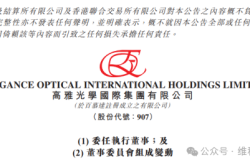Why are Car Companies Introducing Large Vehicles in 2025?
![]() 01/14 2025
01/14 2025
![]() 438
438
In 2025, a fierce "large vehicle battle" for medium and large SUVs is poised to commence.
On January 3, 2025, as the new year dawned, Lynk & Co led the charge with the launch of its latest product. The Lynk & Co 900, the brand's flagship model, not only marks Lynk & Co's entry into the large luxury SUV market but also represents its largest model to date.
To outsiders, this newly unveiled "9" series model is set to compete not only with established luxury brands like Range Rover but also with emerging players such as the AITO M9 and Li Auto L9.
For a long time, the medium and large SUV market has been dominated by traditional luxury brands. Independent brands have occasionally ventured into this space, but their efforts to move upmarket have primarily focused on the mid-to-high-end sedan segment. The medium and large SUV market has remained a relatively unexplored "gray area."
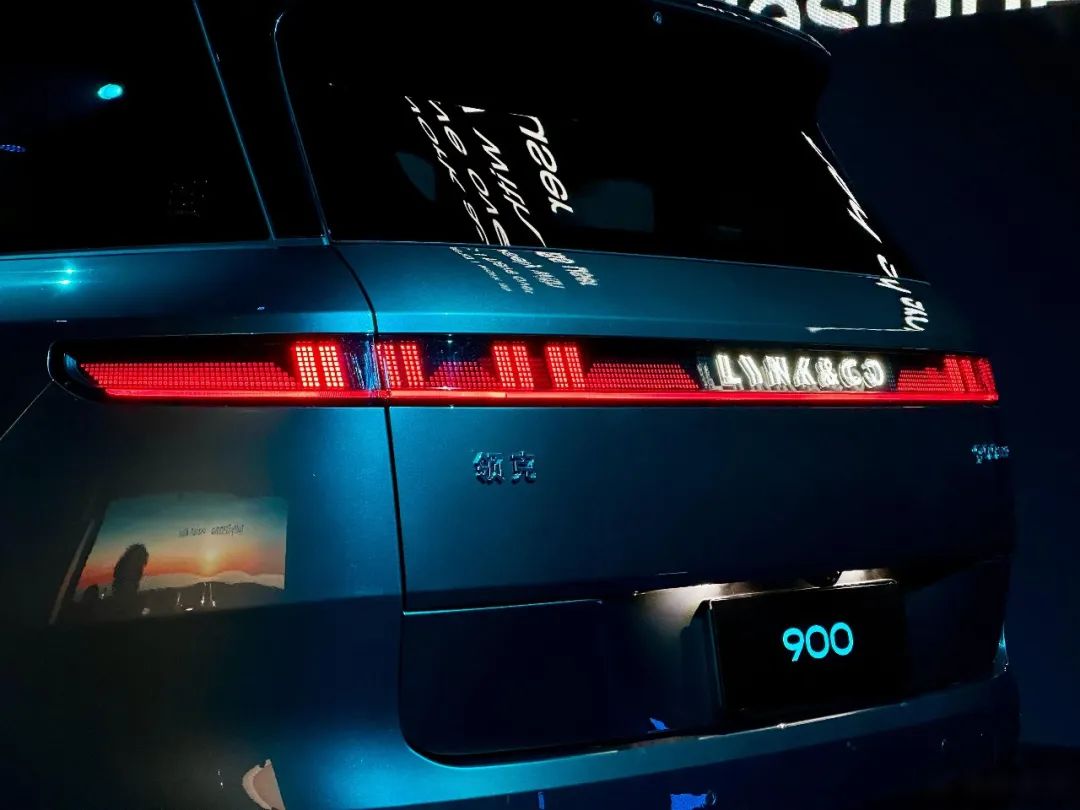
Since 2021, new players like AITO have successfully challenged the luxury brand monopoly in this market through electrification and intelligence, further expanding the market and cultivating new consumption habits for medium and large SUVs. Chinese consumers have rediscovered the appeal of "three-row large-space" SUVs.
According to data from the China Association of Automobile Manufacturers, sales of medium and large SUVs surpassed 1.26 million units in 2024, marking a 62% year-on-year increase. This growth, coupled with the shrinking market share of luxury brands, has significantly expanded the overall market.
Against this backdrop, a "large vehicle battle" for medium and large SUVs is set to unfold in 2025.
"Large Vehicle Battle"
In addition to the newly released Lynk & Co 900, over a dozen large vehicles of similar size are expected to hit the market in the coming year. These include the AITO M8, Deepal S09, BYD Tang L, Tenzing N9, Hyperion HL, Chery Fengyun T11, Galaxy Starship 9, XPeng G01, Zeekr EX1H, and Xiaomi N3 (already unveiled), among others.
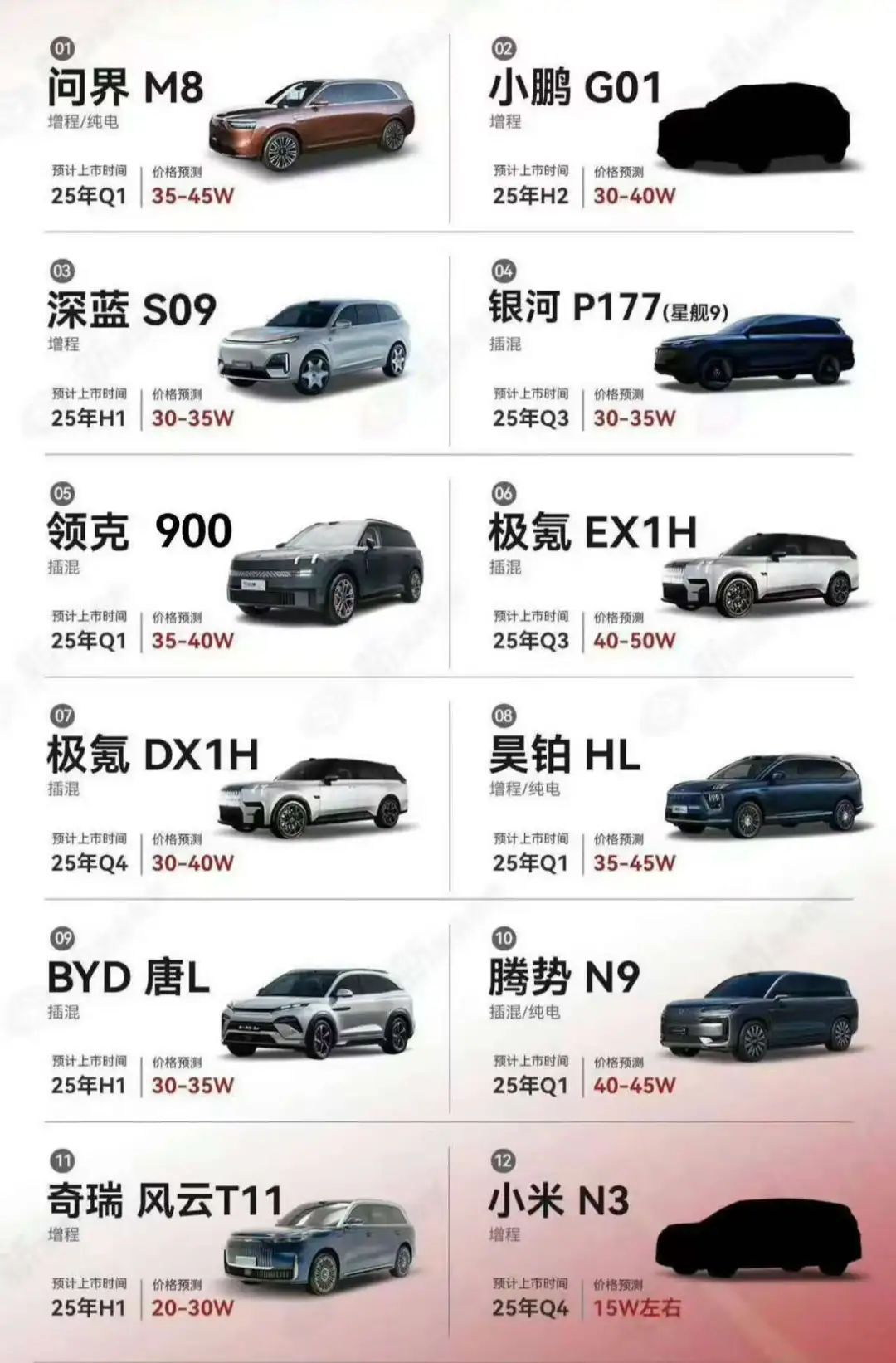
In terms of pricing, these models are typically priced between 300,000 and 500,000 yuan, representing a new wave of high-end aspirations from independent brands.
Historically, the price ceiling for independent brands has hovered around 200,000 yuan. Although some mid-to-high-end sedans have occasionally broken through, they often retreated under actual sales pressure.
With Huawei and Li Auto setting a precedent, the medium and large SUV segment has attracted numerous brands confident in securing a foothold and leveraging it to achieve brand premiumization.
It is estimated that the market size for medium and large SUVs will expand to 2 million units in 2025.
In terms of powertrains, these models can be broadly divided into two categories. The first is the extended-range category, represented by Li Auto and Huawei, with newcomers like Deepal S09, Chery Fengyun T11, XPeng G01, and even Xiaomi N3 deploying extended-range technology in their new large SUVs.
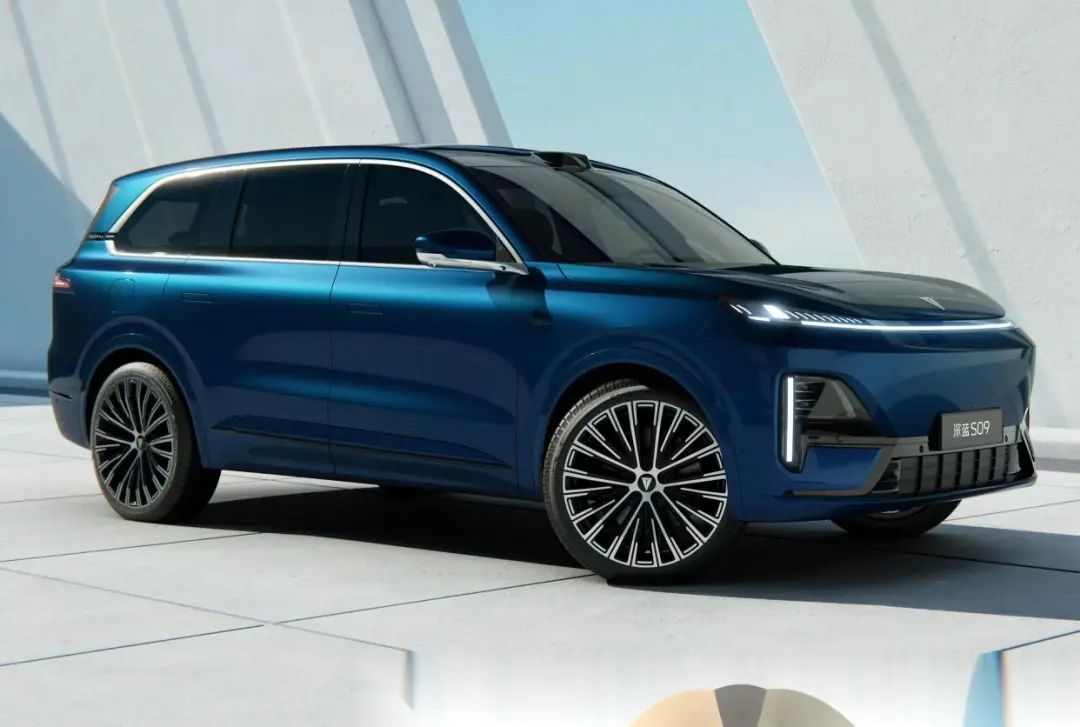
Within the Geely family, whether it's Zeekr, Lynk & Co, or Galaxy, all utilize the group's plug-in hybrid system. Additionally, BYD employs its DM-i system for its medium and large SUVs.
In this arena, AITO and Huawei have relied on extended-range technology to carve out a market. The extended-range path has proven to be a viable solution. Even NIO has achieved explosive sales growth with a series of low-priced, homogeneous products. In 2024, NIO delivered nearly 300,000 vehicles, marking a year-on-year increase of over 100%. Currently, it has delivered over 40,000 vehicles for two consecutive months.
The C10, C11, and C16 are nearly identical to Li Auto's L series but offer prices that are one-third lower within the same size category.
Cao Li, Senior Vice President of NIO, stated, "NIO does not reject the label of 'little Li Auto' and currently has no plans to enter the market above 300,000 yuan. Instead, it will focus on more extensive mass-market models to solidify its position in the largest market segment."
The message is clear: NIO aims to be a budget-friendly alternative to Li Auto. In a broader market, alternatives often represent a larger consumer base.
However, among the models set to be released in 2025, almost all harbor dreams of premiumization, with prices set above 300,000 yuan. There is a mindset of "not premium, rather not exist."
On the other hand, plug-in hybrids in this segment have not undergone systematic market testing. Empirically, plug-in hybrids have higher manufacturing costs than extended-range vehicles, which are inevitably reflected in their selling prices. However, their advantages in power and energy consumption under depleted battery conditions may present another opportunity.
Currently, AITO and Li Auto face some pain points and shortcomings. However, from another perspective, they have a significant advantage over traditional luxury brands in terms of intelligent infotainment systems and driving configurations, almost reaching domestic peak levels.
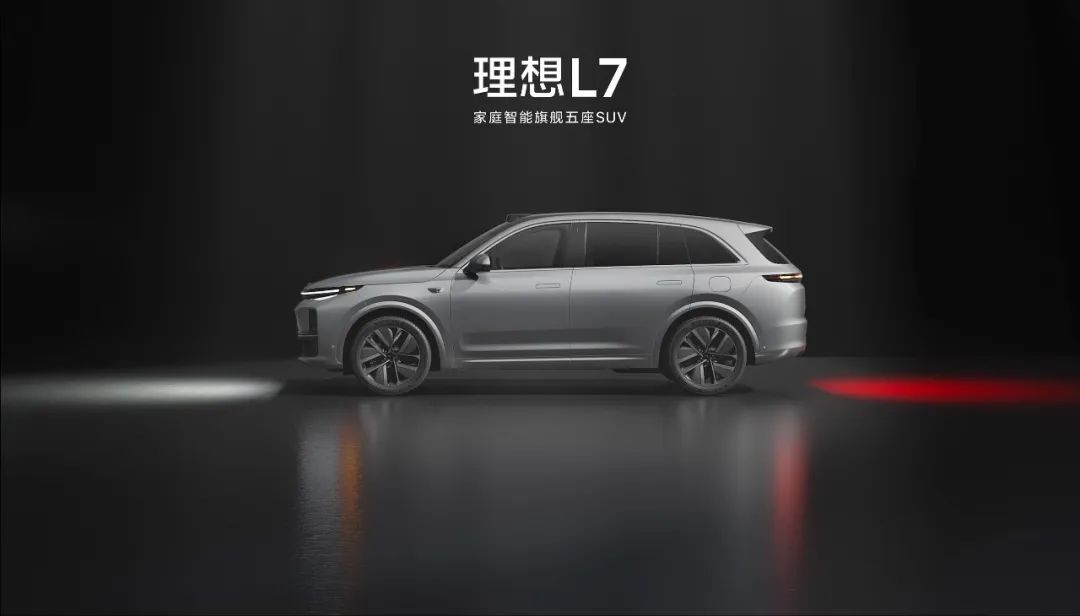
What are the key cards that independent brands can play as they enter the medium and large SUV market? If they cannot be as clear and thorough as NIO, how will they face competition without a price advantage?
After all, the competition faced by traditional luxury medium and large SUVs is not from better mid-size SUVs, larger SUVs, or intelligent new energy SUVs, but from entirely new products that combine all these elements and fundamentally alter consumer perceptions at this price point.
In this area, independent brands have every advantage. However, amid internal competition, standing out relies on leveraging their strengths. Who offers the lowest price, the best infotainment system, the most advanced intelligent driving features, the longest range, and the lowest fuel consumption...
These key factors in consumers' minds are not mere PPT presentations at product launches but objective user perceptions. Capturing users' minds and making consumers automatically associate these answers with the brand is crucial for companies to consider.
History Repeats Itself
Today's internal competition for medium and large SUVs mirrors the battle for compact SUVs in China in 2016. During those years, when the supercar glory belonged to the Haval H6, the compact SUV market also became the earliest battleground for independent brands and joint ventures.
In 2017, a total of 24.7183 million passenger vehicles were sold, marking a 1.40% year-on-year increase, with the growth rate falling by 13.53 percentage points from the previous year. Among these, 10.2527 million SUVs were sold, representing a 13.32% year-on-year increase. Notably, amidst the overall sluggish car market and based on SUV sales of 9.0470 million units in 2016 (a 44.69% year-on-year increase), a double-digit year-on-year growth was still achieved, showcasing remarkable popularity.
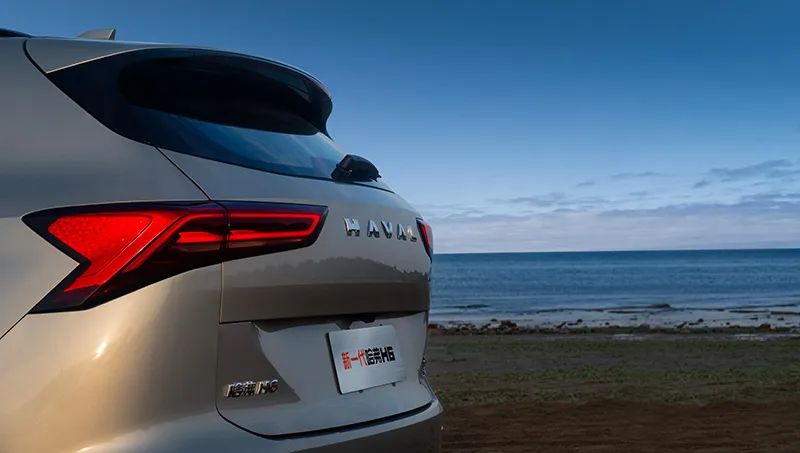
As many automotive executives stated at the time, as long as the launched SUV was cost-effective, sales were not a concern, and monthly sales exceeding 10,000 units were quite normal.
In 2016, a total of 164 new compact SUV models were launched, and in 2017, this figure reached 140. Even when the domestic auto market plunged overnight in 2018 and the SUV market lost its previous growth momentum, major automakers still launched over 300 new SUV models, with compact SUVs occupying half of the market.
The rapid rise of SUVs in the Chinese market is primarily attributed to their unparalleled practicality and versatility. Compared to sedans, SUVs offer higher ground clearance, more spacious interiors, and better off-road capabilities. These features make SUVs ideal for navigating complex urban roads and occasional outdoor adventures like picnics and off-roading.
For modern families pursuing a high quality of life and freedom, SUVs are undoubtedly the perfect choice, as they can carry more items. These features have gradually become part of Chinese automobile consumption habits. Recently, Wang Fengying, President of XPeng Motors, also told the media, "A notable characteristic of Chinese automobile consumption is the love of face. It's not just about space; everything has to be big. Big is everything."
Following consumption upgrades and the increasing proportion of families with two or more children, the current popularity of the medium and large SUV market is a continuation of the previous compact SUV trend.p>However, today's consumer demands have further escalated. What was once sought after might have been a 1.5T engine with an 8AT transmission. Now, it's refrigerators, TVs, large sofas, three-row seating, voice interaction, intelligent driving...
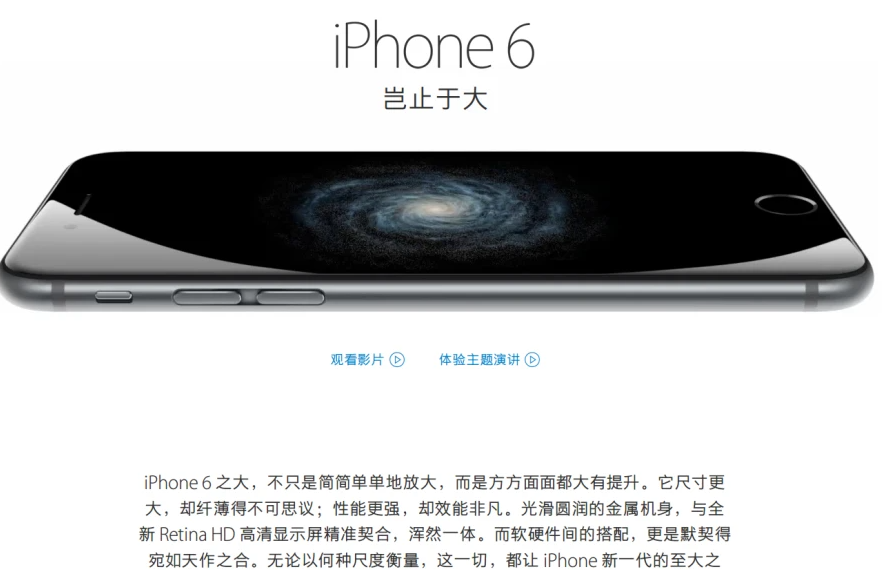
As early as September 2014, Apple used the slogan "Bigger than bigger" for the iPhone 6 and iPhone 6 Plus. The mainland official website translated it as "Bigger than bigger," while the Hong Kong and Taiwan official websites translated it as "Not just big, but bigger." This may have presaged the consumption habits of Chinese users.
During the past deployment of compact SUVs by independent brands to compete with joint venture brands, the majority of popular models focused on cost-effectiveness, offering significant price advantages under comparable product conditions. This later forced joint venture brands to abandon their premium pricing strategies.
Today, independent brands entering the medium and large SUV market are not solely targeting traditional luxury brands. If they merely showcase their advantages over these luxury brands on PPT, they are likely to fail in market competition.
As in the past, most of the newly released compact SUVs were benchmarked against the Haval H6, not the Tiguan, Qashqai, or CR-V.
Frankly speaking, independent brands entering the medium and large SUV market still need to look up to Li Auto and AITO.
Note: Some images are sourced from the internet. Please contact us for removal if there is any infringement.







